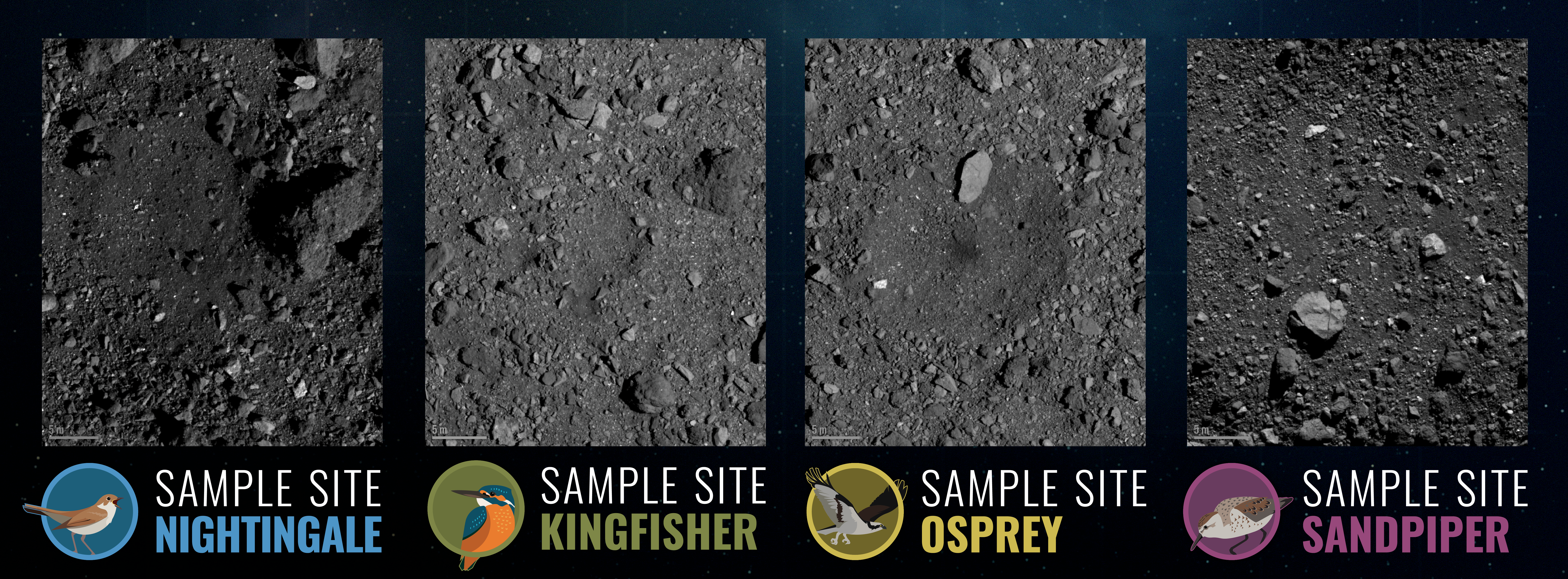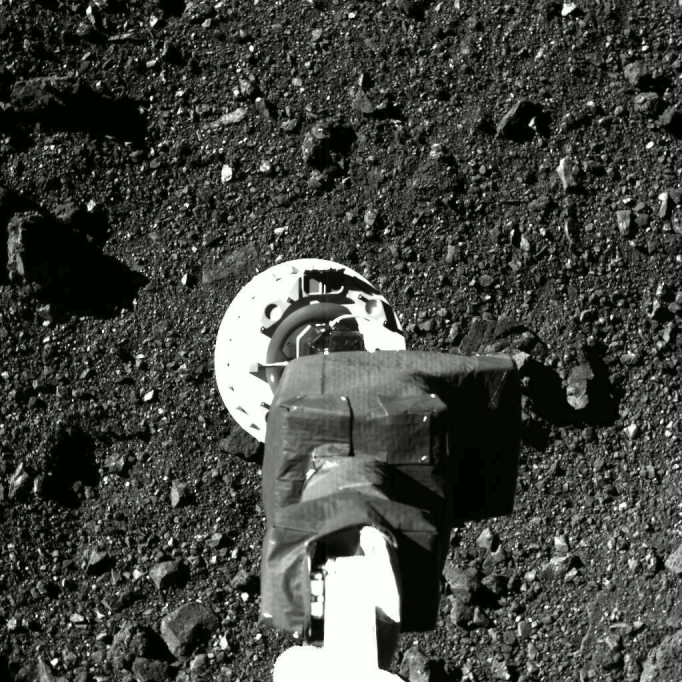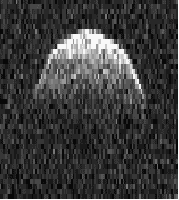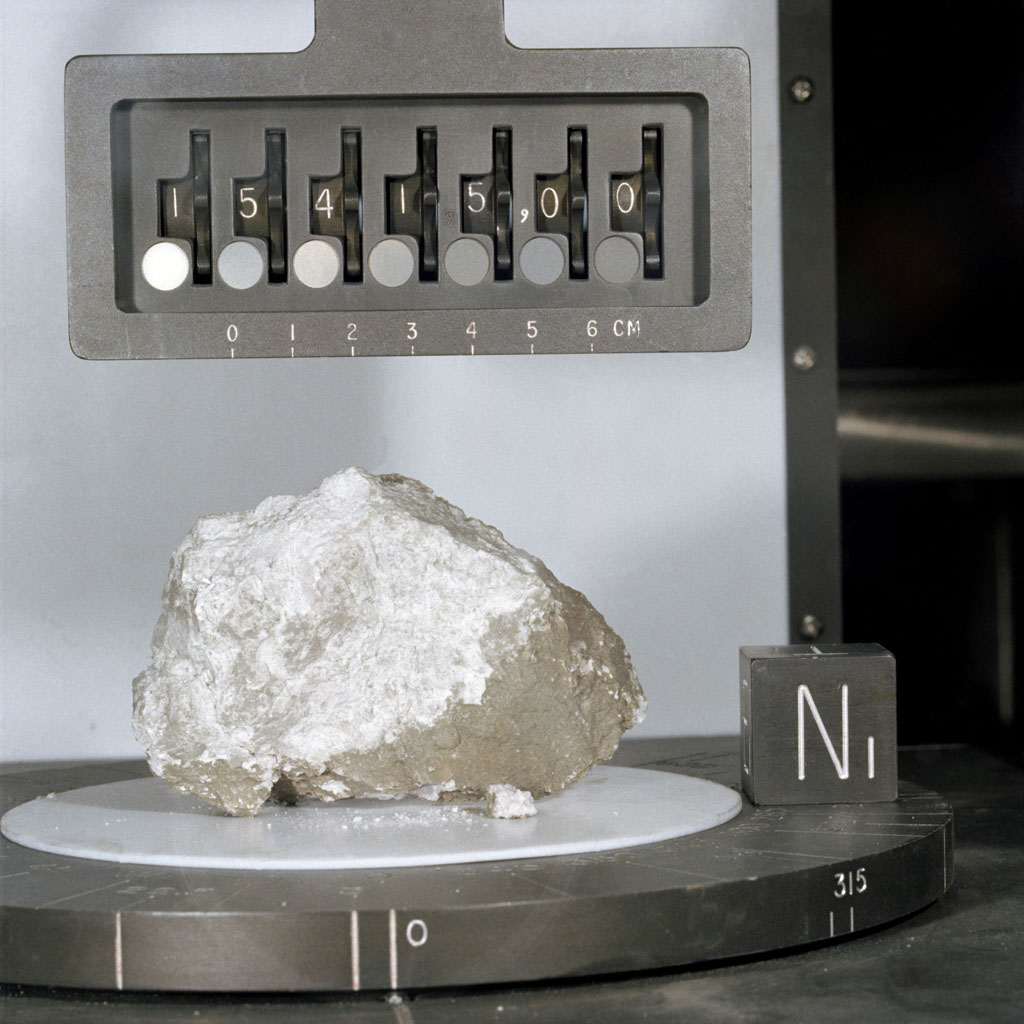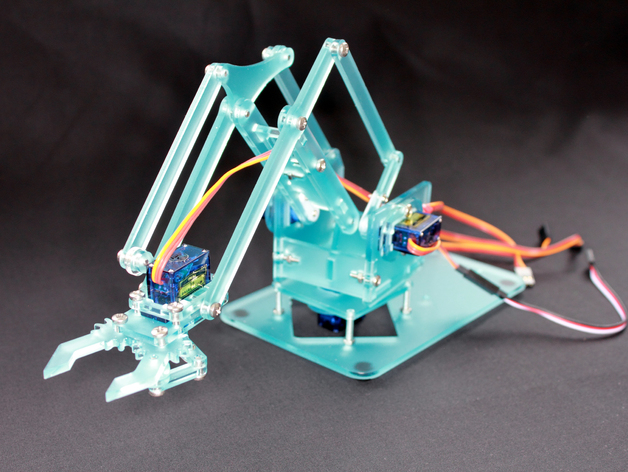|
TAGSAM
TAGSAM or Touch-and-Go Sample Acquisition Mechanism is a robotic arm on the OSIRIS-REx space probe designed and used for collecting a sample from asteroid 101955 Bennu. OSIRIS-REx was launched in 2016. It arrived at asteroid Bennu in August 2018, and began scientific studies. It collected a sample of the material making up the surface of Bennu in 2020 and returned it to Earth in 2023. Overview TAGSAM is a robotic arm attached to the main body of the spacecraft that collects a sample from the asteroid, and puts the samples into the Earth return vehicle. Bennu is about 500 meters in diameter and has very low gravity, so the arm must perform the collection in near zero gravity, yet still contend with some gravitational forces from the asteroid. One issue with small asteroids is their unique gravitational environment, and Bennu became the smallest body orbited by a spacecraft. TAGSAM was designed to take up to three samples from the asteroid, although in the event the first sample wa ... [...More Info...] [...Related Items...] OR: [Wikipedia] [Google] [Baidu] |
OSIRIS-REX SamCam TAGSAM Event 2020-10-20 Sub-100Mpx
OSIRIS-REx was a NASA asteroid-study and sample-return mission that visited and collected samples from 101955 Bennu, a carbonaceous near-Earth asteroid. The material, returned in September 2023, is expected to enable scientists to learn more about the formation and evolution of the Solar System, its initial stages of planet formation, and the source of organic compounds that led to the formation of life on Earth. Following the completion of the primary OSIRIS-REx (Regolith Explorer) mission, the spacecraft is planned to conduct a flyby of asteroid 99942 Apophis, renamed as OSIRIS-APEX (Apophis Explorer). OSIRIS-REx was launched on 8 September 2016, flew past Earth on 22 September 2017, and rendezvoused with Bennu on 3 December 2018. It spent the next two years analyzing the surface to find a suitable site from which to extract a sample. On 20 October 2020, OSIRIS-REx touched down on Bennu and successfully collected a sample. OSIRIS-REx left Bennu on 10&nb ... [...More Info...] [...Related Items...] OR: [Wikipedia] [Google] [Baidu] |
OSIRIS-REx
OSIRIS-REx was a NASA asteroid-study and sample-return mission that visited and collected samples from 101955 Bennu, a C-type asteroid, carbonaceous near-Earth object, near-Earth asteroid. The material, returned in September 2023, is expected to enable scientists to learn more about the formation and evolution of the Solar System, its initial stages of planet formation, and the source of organic compounds that led to the Abiogenesis, formation of life on Earth. Following the completion of the primary OSIRIS-REx (Regolith Explorer) mission, the spacecraft is planned to conduct a flyby of asteroid 99942 Apophis, renamed as OSIRIS-APEX (Apophis Explorer). OSIRIS-REx was launched on 8 September 2016, flew past Earth on 22 September 2017, and rendezvoused with 101955 Bennu, Bennu on 3 December 2018. It spent the next two years analyzing the surface to find a suitable site from which to extract a sample. On 20 October 2020, OSIRIS-REx touched down on Bennu and s ... [...More Info...] [...Related Items...] OR: [Wikipedia] [Google] [Baidu] |
101955 Bennu
101955 Bennu ( provisional designation ) is a carbonaceous asteroid in the Apollo group discovered by the LINEAR Project on 11 September 1999. It is a potentially hazardous object that is listed on the Sentry Risk Table and has the second highest cumulative rating on the Palermo scale. It has a cumulative 1-in-1,750 chance of impacting Earth between 2178 and 2290 with the greatest risk being on 24 September 2182. It is named after Bennu, the ancient Egyptian mythological bird associated with the Sun, creation, and rebirth. has a mean diameter of and has been observed extensively by the Arecibo Observatory planetary radar and the Goldstone Deep Space Network. Bennu was the target of the OSIRIS-REx mission that returned samples of the asteroid to Earth. The spacecraft, launched in September 2016, arrived at the asteroid two years later and mapped its surface in detail, seeking potential sample collection sites. Analysis of the orbits allowed calculation of Bennu's mass a ... [...More Info...] [...Related Items...] OR: [Wikipedia] [Google] [Baidu] |
Sample-return Mission
A sample-return mission is a spacecraft mission to collect and return samples from an extraterrestrial location to Earth for analysis. Sample-return missions may bring back merely atoms and molecules or a deposit of complex compounds such as loose material and rocks. These samples may be obtained in a number of ways, such as soil and rock excavation or a collector array used for capturing particles of solar wind or cometary debris. Nonetheless, concerns have been raised that the return of such samples to planet Earth may endanger Earth itself. To date, samples of Moon rock from Earth's Moon have been collected by robotic and crewed missions; the comet Wild 2 and the asteroids 25143 Itokawa, 162173 Ryugu, and 101955 Bennu have been visited by robotic spacecraft which returned samples to Earth; and samples of the solar wind have been returned by the robotic '' Genesis'' mission. In addition to sample-return missions, samples from three identified non-terrestrial bodies have be ... [...More Info...] [...Related Items...] OR: [Wikipedia] [Google] [Baidu] |
Robotic Arm
A robotic arm is a type of mechanical arm, usually programmable, with similar functions to a human arm; the arm may be the sum total of the mechanism or may be part of a more complex robot. The links of such a manipulator are connected by joints allowing either rotational motion (such as in an articulated robot) or translational (linear) displacement. The links of the manipulator can be considered to form a kinematic chain. The terminus of the kinematic chain of the manipulator is called the end effector and it is analogous to the human hand. However, the term "robotic hand" as a synonym of the robotic arm is often proscribed. Types * Cartesian robot / Gantry robot: Used for pick and place work, application of sealant, assembly operations, handling machine tools and arc welding. It is a robot whose arm has three prismatic joints, whose axes are coincident with a Cartesian coordinator. * Collaborative robot / Cobot: Cobot applications contrast with traditional industri ... [...More Info...] [...Related Items...] OR: [Wikipedia] [Google] [Baidu] |
CAESAR (spacecraft)
CAESAR (Comet Astrobiology Exploration Sample Return) is a sample-return mission concept to comet 67P/Churyumov–Gerasimenko. The mission was proposed in 2017 to NASA's New Frontiers program mission 4, and on 20 December 2017 it was one of two finalists selected for further concept development. On 27 June 2019, the other finalist, the ''Dragonfly'' mission, was chosen instead. Had it been selected in June 2019, it would have launched between 2024 and 2025, with a capsule delivering a sample back to Earth in 2038. The Principal Investigator is Alexander Hayes of Cornell University in Ithaca, New York. ''CAESAR'' would be managed by NASA's Goddard Space Flight Center in Greenbelt, Maryland. Curation of the returned sample would take place at NASA's Astromaterials Research and Exploration Science Directorate, based at Johnson Space Center in Houston, Texas. The ''CAESAR'' team chose comet 67P over other cometary targets in part because the data collected by the ''Rosetta'' mis ... [...More Info...] [...Related Items...] OR: [Wikipedia] [Google] [Baidu] |
Nitrogen
Nitrogen is a chemical element; it has Symbol (chemistry), symbol N and atomic number 7. Nitrogen is a Nonmetal (chemistry), nonmetal and the lightest member of pnictogen, group 15 of the periodic table, often called the Pnictogen, pnictogens. It is a common element in the universe, estimated at Abundance of the chemical elements, seventh in total abundance in the Milky Way and the Solar System. At standard temperature and pressure, two atoms of the element chemical bond, bond to form N2, a colourless and odourless diatomic molecule, diatomic gas. N2 forms about 78% of Atmosphere of Earth, Earth's atmosphere, making it the most abundant chemical species in air. Because of the volatility of nitrogen compounds, nitrogen is relatively rare in the solid parts of the Earth. It was first discovered and isolated by Scottish physician Daniel Rutherford in 1772 and independently by Carl Wilhelm Scheele and Henry Cavendish at about the same time. The name was suggested by French chemist ... [...More Info...] [...Related Items...] OR: [Wikipedia] [Google] [Baidu] |
Regolith
Regolith () is a blanket of unconsolidated, loose, heterogeneous superficial deposits covering solid rock. It includes dust, broken rocks, and other related materials and is present on Earth, the Moon, Mars, some asteroids, and other terrestrial planets and moons. Etymology The term '' regolith'' combines two Greek words: (), 'blanket', and (), 'rock'. The American geologist George P. Merrill first defined the term in 1897, writing: Earth Earth's regolith includes the following subdivisions and components: * soil or pedolith * alluvium and other transported cover, including that transported by aeolian, glacial, marine, and gravity flow processes. * "saprolith'", generally divided into the ** ''upper saprolite'': completely oxidised bedrock ** ''lower saprolite'': chemically reduced partially weathered rocks ** ''saprock'': fractured bedrock with weathering restricted to fracture margins * volcanic ash and lava flows that are interbedded with unconsolidated materia ... [...More Info...] [...Related Items...] OR: [Wikipedia] [Google] [Baidu] |
Laser Altimeter
A laser is a device that emits light through a process of optical amplification based on the stimulated emission of electromagnetic radiation. The word ''laser'' originated as an acronym for light amplification by stimulated emission of radiation. The first laser was built in 1960 by Theodore Maiman at Hughes Research Laboratories, based on theoretical work by Charles H. Townes and Arthur Leonard Schawlow and the optical amplifier patented by Gordon Gould. A laser differs from other sources of light in that it emits light that is ''coherent''. Spatial coherence allows a laser to be focused to a tight spot, enabling uses such as optical communication, laser cutting, and lithography. It also allows a laser beam to stay narrow over great distances (collimation), used in laser pointers, lidar, and free-space optical communication. Lasers can also have high temporal coherence, which permits them to emit light with a very narrow frequency spectrum. Temporal coherence can also ... [...More Info...] [...Related Items...] OR: [Wikipedia] [Google] [Baidu] |
Frangibolt
A pyrotechnic fastener (also called an explosive bolt, or pyro, within context) is a fastener, usually a nut or bolt, that incorporates a pyrotechnic charge that can be initiated remotely. One or more explosive charges embedded within the bolt are typically activated by an electric current, and the charge breaks the bolt into two or more pieces. The bolt is typically scored around its circumference at the point(s) where the severance should occur. Such bolts are often used in space applications to ensure separation between rocket stages, because they are lighter and much more reliable than mechanical latches. In applications that require safety, precision and reliability, such as the aerospace industry, pyrotechnic fasteners are triggered using exploding bridgewire detonators, which were themselves later succeeded by slapper detonators. Classical blasting caps are generally avoided for such usage. More recent developments have used pulsed laser diodes to detonate initiators ... [...More Info...] [...Related Items...] OR: [Wikipedia] [Google] [Baidu] |

